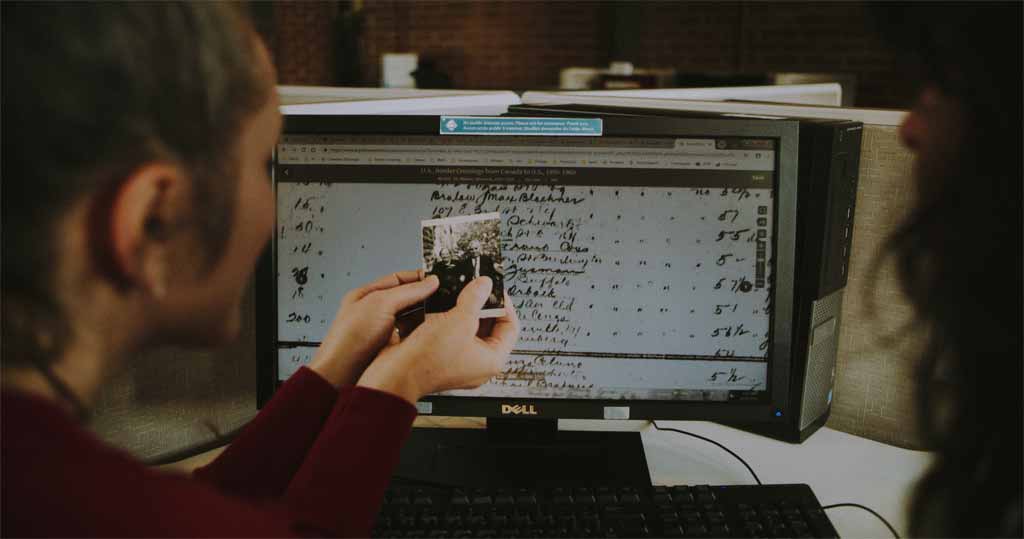
Did you know that the Museum offers personalized and professional research assistance that can help you learn about your family, sometimes dating back many generations?
A popular service
“I am overwhelmed by the help I received.”
In high season there are often lineups at the Museum’s popular Scotiabank Family History Centre. Visitors are keen to dig into their history as soon as they learn about the service. The winter, when there are fewer visitors, is the perfect time to avoid the crowds while researching your genealogy and your family's immigration history at the Museum.
Working alongside our researchers, you may be able to discover things like:
- Where and when your ancestors arrived in Canada
- Street addresses where they lived
- Marriage and death records
- Census records
- Gravesites
Who we can search for
Searches are not limited to people who immigrated through Pier 21. "That's a common misconception," says Jocelyn Bourque, Genealogical Researcher and Manager of the Scotiabank Family History Centre. However, the Museum's researchers don't have access to all records. "We're not going to be able to locate immigration records after 1935." Those arrival records are protected under the Canadian Privacy Act and held by the Department of Immigration, Refugees and Citizenship Canada (IRCC) and are not open to the public.
In-person research vs online research requests
“The staff are so helpful and I learned more about my family history than I could have hoped.”
For those not near the Museum, it is possible to make online research requests. This too is a popular service- in fact, there is a backlog of requests. "Coming in person, you're going to get faster service," says Bourque. "With an online request, it might take months for us to be able to get back to you." In-person visitors also have the opportunity to work alongside researchers and can ask questions and make suggestions and connections as the research progresses.
Visiting in person also allows you to see the Museum’s exhibits, and you can access the services of the researchers at the Scotiabank Family History Centre at no cost. "People are surprised that there is no charge for the researchers’ time," says Bourque. The experienced researchers have access to subscription-only databases that turn up much more information than a standard internet search.
Surprisingly moving
“I was deeply moved to the point of tears. I found records of my grandparents and uncles in 1910.”
Visitors are often surprised by the strong emotional response they feel. The documents uncovered can help them imagine a grandparent or even great-great grandparent as a young person making their voyage to a new home. Seeing an ancestor’s signature can bring history alive. Knowing the address of the home they lived in when they first arrived connects us to their reality.
Find a gift for your family member or loved one
Whether it's for an anniversary or holiday present, you can purchase a framed photo of the ship that brought your loved one to Canada. Or make the very experience of visiting the Museum together your gift.
A visit to the Museum this winter can help you connect with your past and make a new memory.